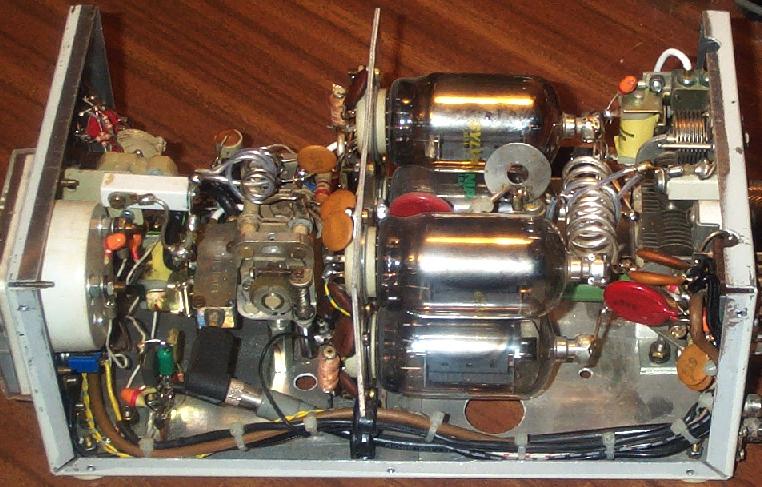
Hi, I am Tony I0JX
A quite unusual linear amplifier for the
4-meter (70-MHz) band
In Italy we have just been granted the 4-meter band. I was fairly sure that this would happen one of these days, so I got prepared in advance and, in year 2005, I realized a 4-meter linear amplifier by modifying a 6-meter amplifier I had built many years ago and not used since long.
Unfortunately, the authorization we got only allows 25 W EIRP, so I cannot presently use it. I can just hope that our Authorities will eventually increase the EIRP limit.
I am here going to briefly describe that amplifier which adopts a rather unconventional approach. It may be regarded more as a curiosity than as something that someone may really want to replicate. As a matter of fact it uses TV sweep tubes that once were common, but are today prohibitively expensive, to the extent of discouraging anyone considering them for building a linear amplifier. Anyway, reading this brief article one may get some ideas for a similar development.
The amplifier in subject employs four 6JB6A tubes in a quite unusual "parallel / push-pull" configuration (i.e. two pair of tubes working in push-pull). When I originally built that amplifier, my rationale was the following:
I wanted a linear amplifier that could be powered by the power supply of my Drake C-line (comprising a T-4XC transmitter), so that, when the T-4XC was not in use, I could re-plug the power supply into the 6-meter amplifier. So, I built the amplifier with the same power connector as the T-4XC (that can be easily plugged and unplugged), and the same final tubes (6JB6A)
the T-4XC utilizes two 6JB6As in parallel and delivers 150 W output with good efficiency up to 30 MHz, It should be noted that Drake also produced the TR-4 transceiver which is powered by the same type of power supply, and instead has three 6JB6As in parallel, still showing good efficiency
I reckoned that, on 6 meters, the plate capacitance of three tubes in parallel was too high to achieve good efficiency, but, at the same time, a linear only having two tubes was not very attractive for me. So I tried to devise some new ideas
in the end, among the possible solutions, I decided to use four tubes in parallel / push pull. My goal was to operate the four tubes at twice the total plate current of the T-4XC, hopefully obtaining not much less than the 300 W output (i.e. twice the T-4XC power).
And the results I got were very good, because the amplifier delivered 300 W RF on 6 meters (as measured on a Bird wattmeter), at a plate current of nearly 900mA. Yes, the power supply was significantly overloaded, but it worked anyway (more recently, I built a replica of the Drake power supply using a more powerful transformer).
The total plate capacitance of four tubes in parallel / push-pull, as seen by the plate coil, equals that of a single tube. You can get convinced on that by looking at the following figure where a single-tube solution is compared with a four-tube parallel / push-pull solution.

Push-pull circuits also yield the advantage of greatly suppressing even-order harmonics and intermodulation products.
In the following picture you can see the linear amplifier after the 4-meter modification.

The 4-meter modification involved:
replacing the grid coil and re-tuning the variable capacitors for 1:1 input SWR
replacing the plate coil and re-tuning the variable capacitors for maximum output power
re-adjusting neutralization
On 4 meters, the amplifier showed the same performance as on 6 meters, this fact demonstrating the validity of the parallel / push-pull configuration for operating multiple tubes at fairly high frequencies. On 4 meters I noted a higher gain than on 6 meters, and the 10 W drive power now results to be even excessive.
Please write me if you wish to have more details.
Tony, I0JX
Return to the I0JX home page
This page hosted by ![]() Get your own Free Home Page
Get your own Free Home Page